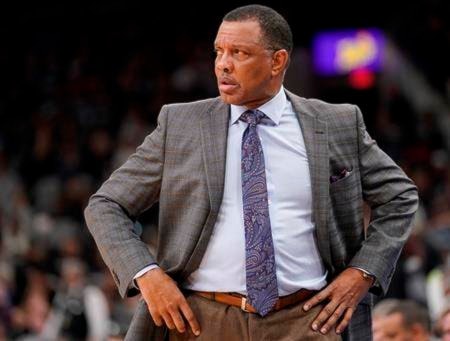The NBA continues to lead the way in men’s professional sports in racial and gender hiring practices, according to a diversity report released Tuesday.
The league earned an A+ for racial hiring practices and a B for gender hiring practices for an overall grade of an A. That keeps the NBA “significantly above” other professional sports, according to the report’s author Richard Lapchick, the director of The Institute for Diversity and Ethics in Sport.
“The NBA remains the industry leader among men’s sports for racial and gender hiring practices even with the increased grading scales introduced last season,” Lapchck said.
The report states that the NBA league office has the best record for people of colour in men’s professional sports at a 36.4 per cent employment rate.
The league, which was first to have three team owners who are people of colour, now has seven women who served as team presidents/CEOs during the 2017-2018 season — the highest among men’s professional sports.
The report states there are also more NBA general managers and head coaches of colour than in the past.
The general managers who are people of colour doubled from last season from 10 per cent to 20 per cent overall, which puts the NBA well ahead of other men’s sports leagues.
That’s a big positive, Lapchick said.
As for head coaches, there were 30 per cent of all NBA head coaches were people of colour last season. But following the coaching changes at the end of this past season one-third of all NBA head coach are now people of colour.
The same trend has trickled down to the assistant coach level, where the percentage of people of colour increased from 45.4 per cent in the 2016-2017 to 45.7 per cent this past season.
Likewise, there was an increase in the percentage of people of colour as vice-presidents at the team level too, increasing to 25.4 per cent this past season, up nearly six per cent from the previous season.
Lapchick also said that in two of the other categories that were reclassified — team management and team professional staff — the percentage of people of colour increased significantly from 23.4 per cent to 31.2 per cent and from 32.6 per cent to 39.5 per cent, respectively.
Lapchick had some concerns when it comes to gender hiring at the team level, a category which dropped for the third straight year.
The percentage of women decreased for team vice-presidents and team professional staff. Women who held team vice-president positions made up 23.5 per cent, a slight decrease from last year’s study. The percentage of women in team professional staff positions decreased by 2.9 percentage points from 40.1 in to 37.2 per cent.
“It’s something we are keeping an eye on,” Lapchick said. “In men’s sports in general gender hiring is a major concern.”
However, Lapchick said the NBA still outpaces other leagues in gender hiring.
Despite those slight drop-offs in gender hiring, Lapchick called Commissioner Adam Silver and the NBA the “industry leaders” among all men’s professional sports leagues in overall racial and gender hiring practices.
